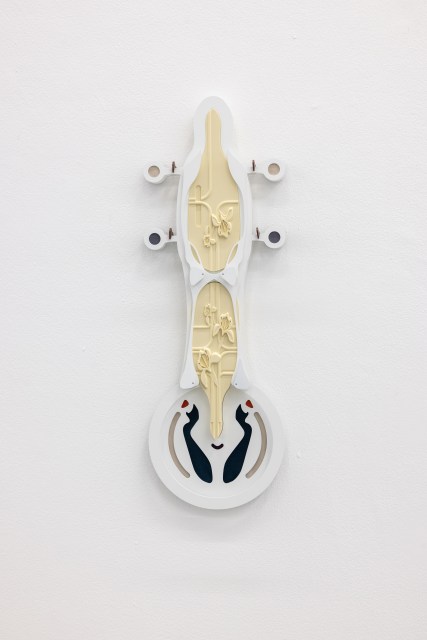Marking CARBON 12's 87th exhibition and Amba Sayal-Bennett's third solo exhibition with the gallery, the artist presents a series of new works. Coinciding with Art Dubai 2023, the exhibition, Architectures of Excess, continues Sayal-Bennett's exploration of translation, boundaries, and migration.
---
Amba Sayal-Bennett is a British-Indian artist working across drawing, projection, and sculptural installation. Her practice explores how methods of abstraction are exclusionary and performative, crafting boundaries between what is present, manifestly absent, and othered. Her recent work focuses on the architectural legacies of Modernism, tracing the migration of rational forms across the ocean to places such as Chandigarh in the Punjab, where her maternal grandparents were born. Using translation as method, she explores the movement of bodies, knowledge and form across different sites, processes inherent to the diasporic experience. Central to the struggle for modernity in PostcolonialIndia, Le Corbusier’s Chandigarh was commissioned by Nehru in 1950. This purpose-built city of clean lines and concrete surfaces was intended to look toward the future by cutting away the violence of India’s partitioned past. Sayal-Bennett is interested in these failed utopic projects and the problematic role of European Modernism in the expression of their ideologies. In this exhibition, the artist presents a new body of sculptural work that explores questions around inheritance and proposes ways to engage with this architecture and its legacies critically.
Honed like a tool to follow function and need, Modernism rejected ornament as an unnecessary appendage. Sayal-Bennett’s 3D printed, mild-steel sculptures respond to these instances of exclusion. The sculptures incorporate elements from Moghul miniatures, flower motifs that overgrow their steel frames. Sayal-Bennett employs ornament, Modernism’s repressed element, as an irritant to act against the rigidity of sanitised geometries. The botanical forms register fullness, rejecting both ubiquitous whiteness and sterile emptiness, making space for an encounter between the symbolic order of Modernism and that which threatens its stability. In these pieces, form does not follow function but instead dictates the work’s development. Ornamental motifs become autonomous, free-standing structures, fabricated using the same digital methods that have ushered in an ornamental renaissance within contemporary architectural practice.
The works draw on the language of the model or the plan, recalling scale miniatures, prototypes, or maquettes of unbuilt projects. Speculative futures are embodied in these objects. Sayal-Bennett reimagines architecture, not as a tool to carve up or colonise space, but as an experiment in future imagining. The work has a sci-fi aesthetic – a genre which has long been criticised for its colonial overtones and veneration of imperial adventure, often characterised by stream-lined Modernist architecture to depict its utopian visions of speed and progress. Sayal-Bennett is interested in the notion of the Orient as a place of European invention – the constitutive ‘outside’ of the Occident – a logic which transformed farness as a spatial marker of distance into a property of people and place. In these works, Sayal-Bennett reclaims farness as both a spatial and temporal element, drawing on ornament to create propositional forms directed towards the future. Her formal investigations trace the interconnected and complex relationships between science-fiction, Modernism, and Imperial legacies to present a schematic of resistance, an architecture of excess that enlists excluded and marginalized elements in a project of post-colonial storytelling.

